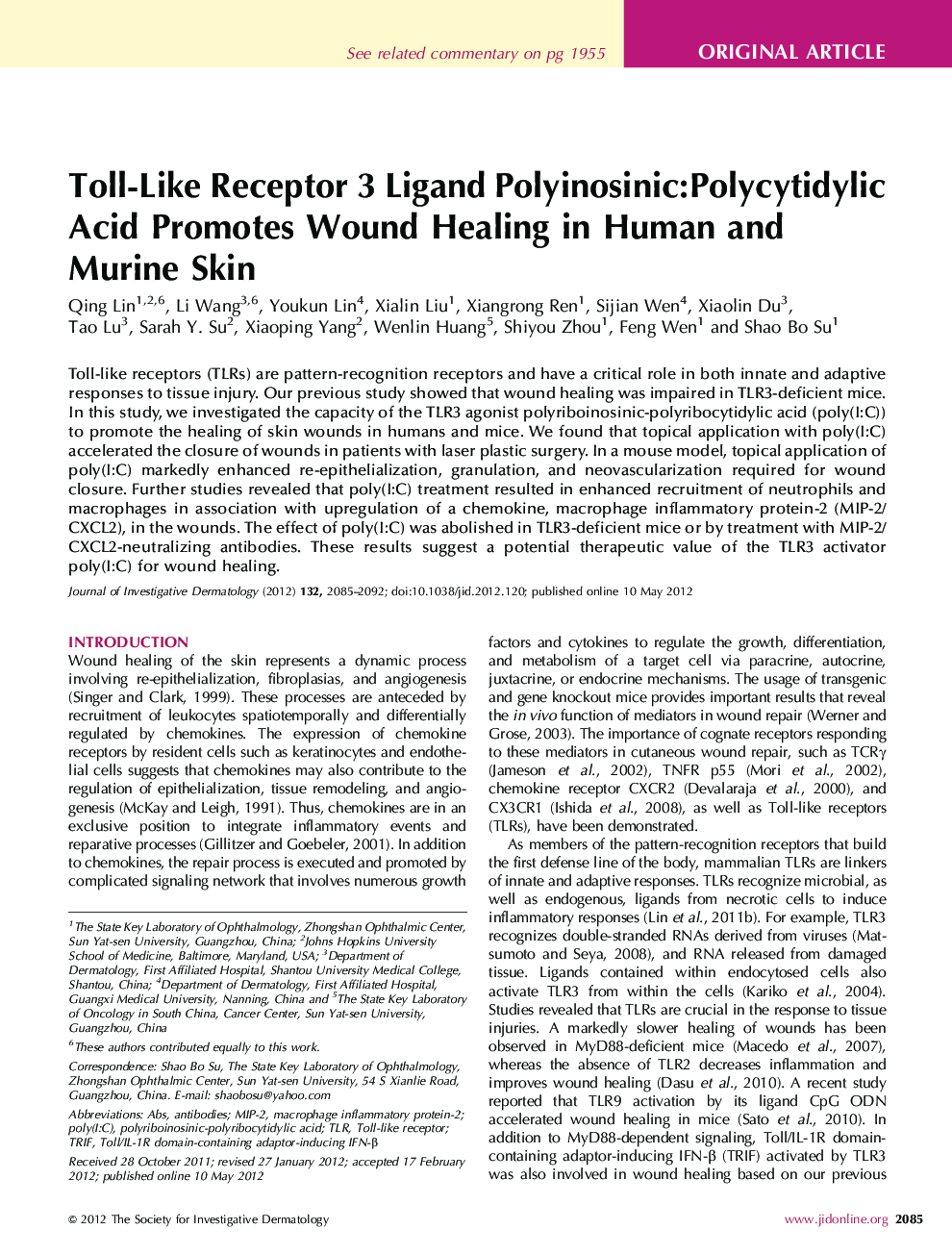| کد مقاله | کد نشریه | سال انتشار | مقاله انگلیسی | نسخه تمام متن |
|---|---|---|---|---|
| 6078281 | 1203566 | 2012 | 8 صفحه PDF | دانلود رایگان |

Toll-like receptors (TLRs) are pattern-recognition receptors and have a critical role in both innate and adaptive responses to tissue injury. Our previous study showed that wound healing was impaired in TLR3-deficient mice. In this study, we investigated the capacity of the TLR3 agonist polyriboinosinic-polyribocytidylic acid (poly(I:C)) to promote the healing of skin wounds in humans and mice. We found that topical application with poly(I:C) accelerated the closure of wounds in patients with laser plastic surgery. In a mouse model, topical application of poly(I:C) markedly enhanced re-epithelialization, granulation, and neovascularization required for wound closure. Further studies revealed that poly(I:C) treatment resulted in enhanced recruitment of neutrophils and macrophages in association with upregulation of a chemokine, macrophage inflammatory protein-2 (MIP-2/CXCL2), in the wounds. The effect of poly(I:C) was abolished in TLR3-deficient mice or by treatment with MIP-2/CXCL2-neutralizing antibodies. These results suggest a potential therapeutic value of the TLR3 activator poly(I:C) for wound healing.
Journal: Journal of Investigative Dermatology - Volume 132, Issue 8, August 2012, Pages 2085-2092